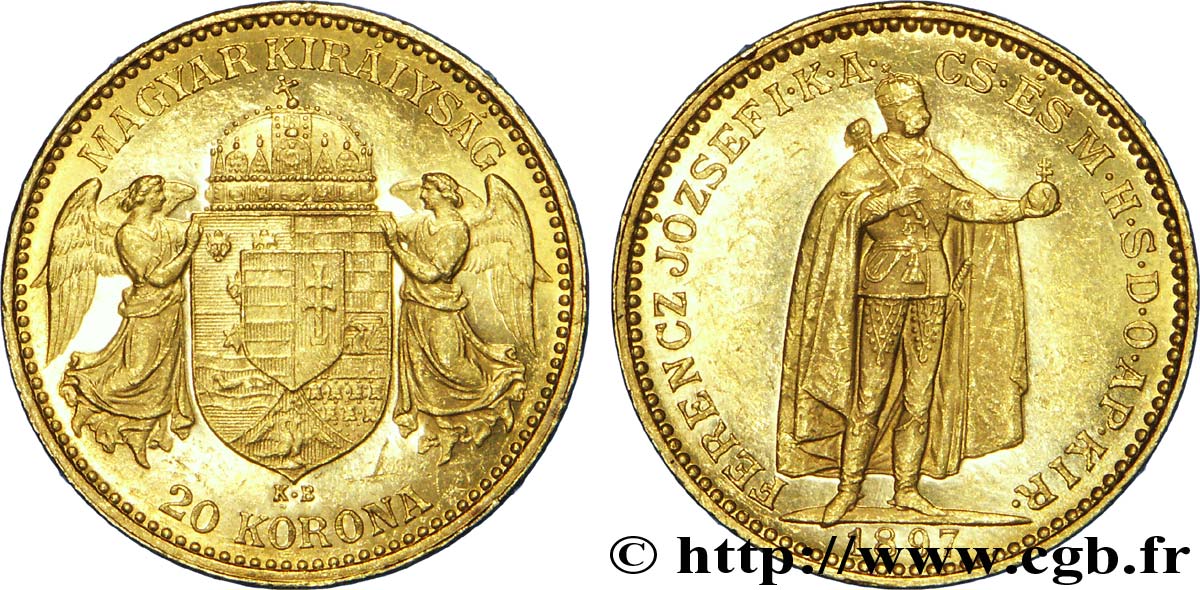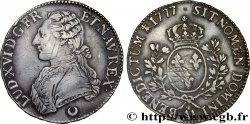fwo_204737 - UNGHERIA 20 Korona François Joseph / écu de Hongrie 1897 Kremnitz, KB, 1.819.000 ex
non disponibile.
Articolo venduto sul nostro negozio (2010)
Prezzo : 280.00 €
Articolo venduto sul nostro negozio (2010)
Prezzo : 280.00 €
Tipo : 20 Korona François Joseph / écu de Hongrie
Data: 1897
Nome della officina / città: Kremnitz, KB, 1.819.000 ex
Quantità coniata : 1819000
Metallo : oro
Titolo in millesimi : 900 ‰
Diametro : 21 mm
Asse di coniazione : 12 h.
Peso : 6,78 g.
Orlo : inscrite en creux BIZALMAM AZ OZI ERENYBEN (Ma confiance a la vertu originelle)
Commenti sullo stato di conservazione:
Presque FDC
N° nelle opere di riferimento :
Diritto
Titolatura diritto : FERENCZ JOZSEF I. K. A. - CS. ES. M. H. S. D. O. AP. KIR./ 1897.
Descrittivo diritto : François-Joseph Ier debout en pied à droite, en habit de sacre.
Traduzione diritto : (François-Joseph par la grâce de Dieu empereur d'Autriche et roi apostolique de Hongrie, Croatie, Slavonie et Dalmatie).
Rovescio
Titolatura rovescio : MAGYAR KIRALYSAG/ 20 KORONA.
Descrittivo rovescio : Écu couronné surmonté de la couronne de saint André soutenu par deux anges.
Traduzione rovescio : (Royaume de Hongrie).
Commento
La réforme monétaire de 1892 modifia l'unité monétaire qui devint la korona, divisée en 100 fillers. Ce type fut fabriqué entre 1892 et 1915. Par rapport à des événements récents, nous constatons qu'en Hongrie du XIXe siècle, le passage définitif d'une devise à une autre se fit en vingt-sept ans. Les Européens d'aujourd'hui sont devenus, semble-t-il, bien plus malléables.
The monetary reform of 1892 changed the monetary unit, which became the korona, divided into 100 fillers. This type was produced between 1892 and 1915. Compared to recent events, we see that in 19th-century Hungary, the definitive transition from one currency to another took twenty-seven years. Today's Europeans have apparently become much more malleable.
The monetary reform of 1892 changed the monetary unit, which became the korona, divided into 100 fillers. This type was produced between 1892 and 1915. Compared to recent events, we see that in 19th-century Hungary, the definitive transition from one currency to another took twenty-seven years. Today's Europeans have apparently become much more malleable.








 Segnalare un errore
Segnalare un errore Stampate la pagina
Stampate la pagina Condividi mia selezione
Condividi mia selezione Fai una domanda
Fai una domanda Consegnare / vendere
Consegnare / vendere
 Descrittivo
Descrittivo















